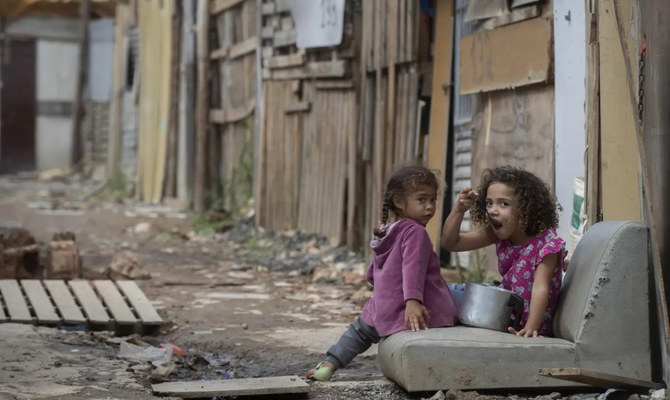Ehtesham Shahid
The Asian Development Bank’s 2023 report, “Key Indicators for Asia and the Pacific,” explains the persistently relevant subject of poverty as one that “goes beyond lack of income or the absence of financial resources to meet basic needs.” Multiple complex issues and situations converge to push people into poverty, the report claims, adding that, while extreme poverty in developing Asia is forecast to shrink to 1 percent of the population by 2030, rates of moderate poverty and economic vulnerability will remain disturbingly high.
The “complicated problems” surrounding poverty compelled stakeholders to include a new way of measuring it, the global Multidimensional Poverty Index, which became part of the UN Sustainable Development Goals in 2015. Instead of just looking at how much money people have, this approach analyses other things that make life difficult for impoverished people. These include insufficient food, clean bathrooms, good medical care, school or access to essential services, and a job. They use a score that looks at all these problems to determine poverty’s direness.
Besides being a global measure of acute multidimensional poverty covering 100 developing economies, the Multidimensional Poverty Index also complements traditional monetary poverty measures by simultaneously capturing the acute deprivations in health, education and living standards that an underprivileged person faces. Cooking fuel, for instance, is one of the six indicators in the living standard dimension of poverty. Over the years, economists have highlighted the various facets of poverty and explained that it can adversely impact the poor’s economic behavior, which is often construed as irrational.
Poverty can lead individuals to save little money and borrow too much to cover their essential expenses, leading to a vicious cycle. It can make people focus on immediate needs rather than planning for the future. However, the most poignant element of the Asian Development Bank’s report is “paradoxical evidence,” suggesting it may cost more to be poor, especially during crises and uncertainty.
It is akin to a daily wage worker having to co-pay the insurer more for a medical service than someone with comprehensive insurance providing zero co-payment. While poverty in all its forms is degrading and detrimental to the development of human potential, only a bottoms-up approach can make a significant difference. If the poorest of the poor get a chance at life, those higher up the ladder will get inspired and find ways to survive and excel.
The UN Development Programme’s global Multidimensional Poverty Index 2023 says the higher the incidence of poverty, the higher its intensity. According to the study, 1.1 billion of the world’s 6.1 billion population are poor and 485 million live in severe poverty across 110 countries. Moreover, 534 million out of 1.1 billion people — i.e., half of all poor people — live in sub-Saharan Africa. More than a third of all poor, 389 million, live in South Asia and almost 84 percent of the poor live in rural areas. While all these figures present unique faces and deprivations, one solution cannot fit them all.
The UN Development Programme recommends addressing impoverished individuals’ various interconnected challenges, which is crucial to combating poverty effectively. Research shows that people in multidimensional poverty typically experience multiple hardships and breaking down the global index into specific indicators clarifies the most common overlapping challenges. This means that stakeholders can concentrate on tackling impoverished individuals’ many difficulties.
This can be achieved by analyzing data related to Multidimensional Poverty Index values, the percentage of people living in poverty, their severity, the total number of impoverished individuals and the factors contributing to their poverty. This approach aims to reduce severe multidimensional poverty.
Using multidimensional and monetary poverty metrics to measure things people lack that are not related to money is a good idea. These deprivations encompass various nonfinancial aspects of well-being and quality of life that can significantly affect a person’s living conditions and opportunities.
Seeking an end to the poor population’s deprivations goes beyond the call of conscience. People in poverty often face social stigma, exclusion and discrimination, which can profoundly impact their mental and emotional well-being. Poverty can also increase the risk of exposure to crime and violence, leading to a sense of insecurity and fear among affected individuals. Policies and initiatives aimed at poverty reduction should consider these broader dimensions of deprivation to improve the overall well-being of impoverished individuals and communities.
Poverty can also vary in terms of the degree of its manifestation. For instance, absolute poverty differs from relative poverty, which is defined as the standard of living within a particular society or community. Chronic poverty refers to long-term and persistent deprivation spanning generations. Individuals or families trapped in chronic poverty often struggle to escape due to structural barriers and lack of opportunities. Situational poverty is temporary and occurs due to specific life events or crises such as job loss, illness, natural disasters or divorce.
Understanding the various faces of poverty is essential to the development of targeted policies and interventions that can alleviate its effects and help create a more equitable and inclusive society. Poverty is not a one-size-fits-all issue; addressing its diverse dimensions requires a persistent, nuanced approach.







